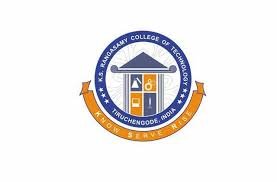Admission to M.Tech. Nano Science & Technology: Meet eligibility, apply, attend entrance exam (if needed), counseling, document verification, fees.
Admission Process: M.Tech. Nano Science Technology Course
The admission process for an M.Tech. (Master of Technology) program in Nano Science and Technology is a multi-step procedure that involves meeting specific eligibility criteria, submitting applications, participating in entrance exams (if applicable), and attending counseling or interviews. Below, we provide a comprehensive overview of the admission process for this specialized field of study:
1. Eligibility Criteria:
The eligibility criteria for admission to an M.Tech. Nano Science and Technology programs may vary slightly from one institution to another. However, here are the general eligibility requirements commonly observed:
Educational Qualifications: Candidates should have completed a Bachelor's degree in a relevant field of study, such as Physics, Chemistry, Electronics, Material Science, Nanotechnology, or related disciplines. Typically, a Bachelor of Science (B.Sc.) or a Bachelor of Technology (B.Tech.) degree is preferred.
Minimum Percentage or Grade: Many institutions require candidates to have a minimum percentage or CGPA (Cumulative Grade Point Average) in their qualifying undergraduate degree. This percentage requirement often ranges from 55% to 60% or a specific CGPA.
Entrance Exam Score (if applicable): Some universities and institutes may require candidates to have a valid score in a relevant entrance exam, such as the Graduate Aptitude Test in Engineering (GATE) or institution-specific entrance tests.
2. Research and Selection of Institutions:
Before applying, candidates should thoroughly research various educational institutions and universities in India that offer M.Tech. Nano Science and Technology programs. Consider factors such as the institution's reputation, accreditation, faculty expertise, research facilities, and location. Compile a list of institutions that align with your academic and career goals.
3. Application Process:
Once you've identified the institutions you wish to apply to, you need to follow their respective application procedures, which typically involve the following steps:
Online Application: Most institutions offer an online application process through their official websites. Candidates need to fill out the application form accurately, providing personal and academic details.
Application Fee: There is usually an application fee associated with the submission of the application. The fee amount can vary from one institution to another.
Document Submission: Candidates are required to upload or submit supporting documents, including academic transcripts, mark sheets, degree certificates, identification documents, and passport-sized photographs.
4. Entrance Exams (if applicable):
Certain institutions may require candidates to take a relevant entrance exam, such as the GATE or institution-specific tests. It is crucial to check the admission guidelines of the specific institutions you are applying to and prepare accordingly if an entrance exam is mandatory.
5. Merit-Based Selection:
Institutions often employ a merit-based selection process for M.Tech. Nano Science and Technology programs. This selection is primarily based on the candidate's academic performance in their undergraduate degree, entrance exam scores (if applicable), and sometimes interviews or counseling rounds. The institution may publish a merit list or cutoff marks for admission.
6. Counseling or Interview Rounds:
In some cases, candidates may be called for counseling or interview rounds, especially if the institution wishes to assess factors such as research interests, motivation, and career goals. Prepare for these rounds by researching common interview questions and presenting your academic and research achievements.
7. Seat Allotment:
Once the selection process is complete, the institution will allocate seats to eligible candidates based on merit. Candidates may be required to indicate their preferences for specialization areas within Nano Science and Technology during this stage.
8. Document Verification:
After seat allotment, candidates will need to visit the institution for document verification. Make sure to carry all the necessary original documents and their photocopies for verification.
9. Payment of Fees:
After document verification, candidates will be required to pay the course fees within the stipulated time frame to secure their admission. Familiarize yourself with the fee structure and payment deadlines.
10. Orientation and Commencement of Classes:
Finally, candidates attend the orientation program conducted by the institution, where they receive information about the M.Tech. Nano Science and Technology program, curriculum, faculty, and other essential details. The classes typically commence after the orientation.
 2 Years
2 Years
 Post Graduate
Post Graduate
 Engineering
Engineering
 Full Time
Full Time







 back
back